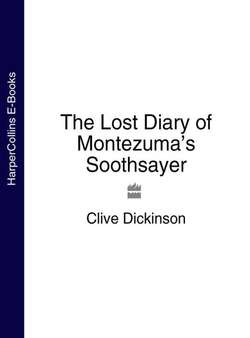Читать книгу The Lost Diary of Montezuma’s Soothsayer - Clive Dickinson - Страница 4
MESSAGE TO READERS
ОглавлениеDuring a recent holiday in Spain, Clive Dickinson and his family visited a local market. Among the stalls selling fruit and vegetables, clothes, shoes, sunglasses and beachwear, his two children found a stall selling postcards and old books. One particular book was made up of pages stitched together so that it opened up like a concertina. There were no written words. Instead the pages were covered in brightly coloured pictures. It looked like a battered old comic book and so ancient that Mr Dickinson thought it might be a rare treasure – a priceless document. Could it have been something brought back to Spain by the early Spanish adventurers in Central America? Further investigation proved that it was.
Leading experts in the history of America before the Spanish conquest carefully examined the book, or codex, as they called it. Dr Shady Practice and Professor Pulltheotherone confirmed that it dated from the early sixteenth century; the time when Spanish soldiers, traders and missionaries had begun to explore and conquer the New World.
The two historians revealed an even more amazing secret. It appeared that the book was a diary, covering the last years of the Aztec empire during the reign of Montezuma II (or Moctezuma, as his name is sometimes spelt) who was the Aztec king, or Great Speaker. When the diary was translated it told of the arrival of Hernán Cortés and the first Spaniards to the Aztec world.
The diarist seems to have been one of the advisers to Montezuma, who had the job of looking into the future to foretell what might happen.
Extracts from the diary appear here for the first time. They give a remarkable picture of the Aztec world and the coming of the Spanish invaders who would soon conquer it.
Note: The diarist, Guessalotl, used the system of dates in the Aztec farming calendar. This had eighteen months. Each month was twenty days long and there were five days left over at the end of the year. However, to make it easier to follow, the translation printed here uses dates in the Christian calendar.
